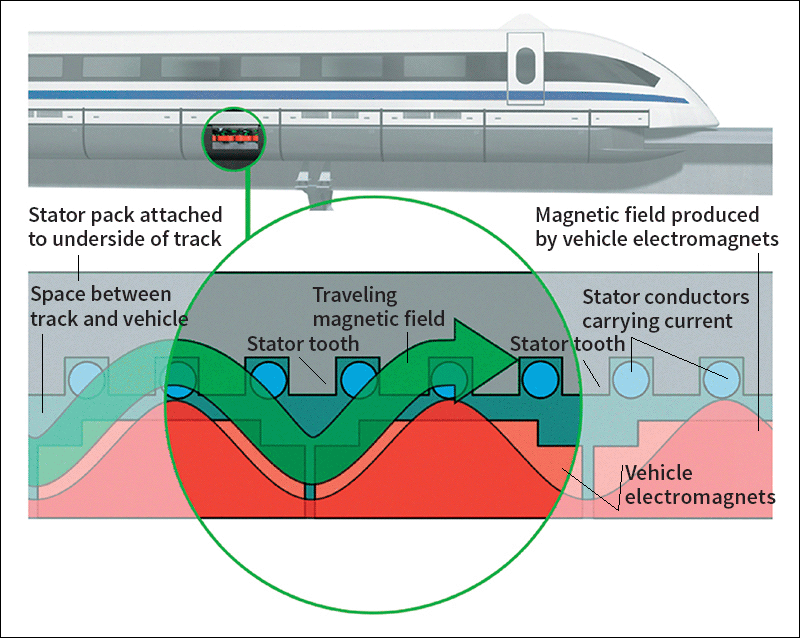Tubing at the Speed of Sound
Tuesday, August 13th, 2013August 13, 2013
Interested in traveling long distances at nearly the speed of sound in a giant, solar-powered tube? Elon Musk, the South African-born entrepreneur and founder of the electric car company Tesla Motors and the private spaceship company SpaceX, has a plan for that. Yesterday, he announced a design for a form of high-tech transportation, dubbed the Hyperloop, that could shoot passenger pods between Los Angeles and San Francisco at speeds approaching 1,116 feet (340 meters) per second–the speed of sound at sea level and a temperature of 59 °F (15 °C). Musk proposed the Hyperloop as an alternative to intercity passenger trains, which he criticized as needlessly slow and expensive to build and operate.
In Musk’s proposed design, the Hyperloop is a hollow steel tube held at a near-vacuum pressure to minimize air resistance and supported above the ground on 25,000 concrete pillars. Inside the tube, floating passenger pods would zip along at a top speed of 760 miles (1,220 kilometers) per hour. Linear induction motors would propel the pods forward with powerful magnetic forces. Electric compressors in the pods’ noses would suck in the air in front of the pod, reducing air resistance. The compressors would also pump air beneath the pods, creating a high-pressure cushion of “air bearings” upon which the pod would float. Solar panels covering the top of the tube could supply all the electric power needed for operation. Batteries would store energy for use during nights or cloudy days.
Musk actually proposed two distinct Hyperloop designs. The first design is just for passengers. The second design, slightly larger and more expensive, could propel cars or other heavy cargo through the tube along with passengers.

A linear synchronous motor can be used to propel a maglev (magnetic levitation) train. The vehicle's electromagnets are powered by a constant current that creates a permanent magnetic field. Alternating current inside the stator produces a traveling magnetic field. The two fields interact to propel the train. (Transrapid International)
Musk estimated the passenger-only Hyperloop would cost about $6 billion to build, and the version with cargo would cost $7.5 billion. Passengers could pay $20 for a one-way ticket to travel between Los Angeles and San Francisco in about 35 minutes. However, Musk said he is not interested in actually managing or funding the project, because of his time-consuming work with Tesla Motors and SpaceX. His detailed proposal for the Hyperloop was intended to spur other inventors and entrepreneurs into action.
Musk’s tube-based transport system is not an entirely original idea. A tube-based subway system operated in New York City from 1870 to 1873. Designed and built by Alfred Ely Beach, an inventor and magazine editor, the Beach Pneumatic Transit line ran underground for only one block. Unlike Musk’s induction-powered Hyperloop, the subway cars were pushed forward through the tube by compressed air. The system had one station, one car, and one set of tracks and was built in secret because Beach couldn’t get permission from city officials. Beach’s small demonstration line was destroyed during the construction of New York’s underground electric train system. In the early 1900’s, pneumatic tubes were used mainly to transport messages, money, and small objects from office to office in large office buildings and from store clerks to cashiers in department stores. In the United States, many banks still use pneumatic tubes to move checks, receipts, and money at drive-up windows.
Additional World Book articles:
- Magnetic levitation train
- Space exploration (2012) (a Back in Time article)


